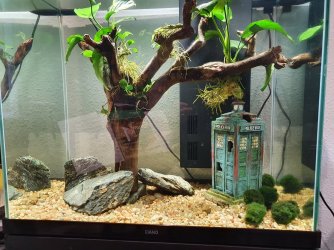There are significant issues here, aside from the tank size unfortunately.
Corydoras are shoaling fish which means they must have a group, and it has to be several fish not just three or four. A group of 9-10 would be best as minimum, with more when space is suited. With the stated dimensions, this is not a large area tank (thinking of the substrate and obviously the identical surface area) but a group of cories would work. Having a few chunks of bogwood/driftwood vertically positioned helps as it provides more surface area for the cories to browse (here, surface not meaning water surface obviously). And I agree they must have fine sand, this is just part of their expectation. So this fish is the first issue to resolve.
Now to the Angelfish. This too is a shoaling species, and a group of five minimum, more preferable, is needed. A pair may well form from such a group, and then there is the issue of the pair not tolerating the other angelfish so a backup plan is needed. There is not sufficient space here for any group though, so without a much larger tank, at least 4 feet but preferably 6 feet in length, this is not a good fish to consider. And finding a "pair" is not easy; the fish must select their mates and bond. Any female with any male, even if distinguishing genders is possible (it often is not in immature fish), is rarely going to work. I would strongly suggest looking at other fish than angelfish here.
That brings us to the water parameters. Corydoras are better in soft water, whereas platies require moderately hard water. There may be some overlap, depending upon the cory species, but you need to find out the hardness especially. GH is total or general hardness, and if you do not already know this, your local water supply authority may have the data on their website. The pH is also important.


